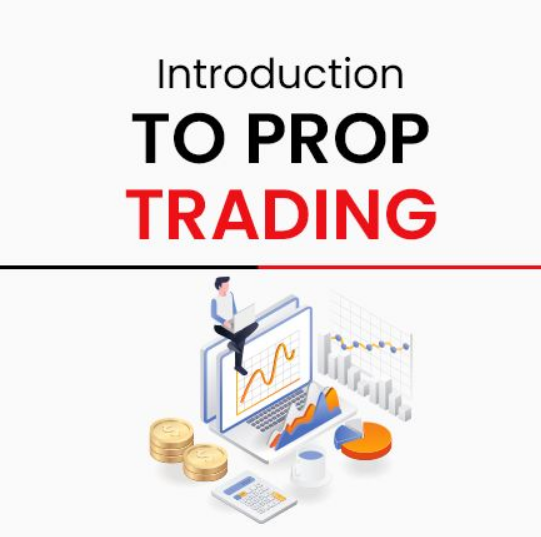Proven Prop Trading Algorithms: Advanced Backtesting Insights
In the fast-paced world of prop trading, precision, advanced analytics, and real-time strategy refinement are essential. This comprehensive guide unveils how prop trading algorithms can be fine-tuned using sophisticated backtesting methods while integrating state-of-the-art automated trading tools. Whether you are a junior trader eager to learn or a senior quant looking to optimize your trading systems, this article addresses your needs with actionable insights.
Introduction to Prop Trading Algorithms
Proprietary trading environments demand relentless innovation and tight risk controls. Prop trading algorithms help firms execute trades at high frequencies, manage market volatility, and provide a consistent edge over competitors. In this post, we will explore the benefits of automated trading platforms, key backtesting methods, and the integration of data analytics in prop trading. For a deeper look into risk management, read our detailed risk management guide.

Advanced Backtesting Techniques for Prop Trading
Effective backtesting is the linchpin of successful prop trading strategies. The following are key considerations:
Backtesting Pitfalls and How to Avoid Them
Common challenges include overfitting, survivorship bias, look-ahead bias, and data snooping. Expert traders suggest:
- Using out-of-sample testing: Ensure robust strategy validation by dividing your dataset into training and testing segments.
- Incorporating walk-forward optimization: Instead of static backtests, adopt a dynamic approach to continuously recalibrate your model.
- Attention to data quality: Use high-frequency tick data when possible and adjust for corporate actions to avoid skewed results.
Integrating Forward Testing
After backtesting, paper trading or forward testing is crucial. Monitor performance indicators such as Sharpe ratio, maximum drawdown, and profit factor to validate your strategy in a live environment. A common best practice is to run the strategy in parallel on simulated accounts before committing real capital.
Comparing Automated Backtesting Tools for Prop Trading
Choosing the right automated backtesting tool influences strategy development profoundly. Below, we compare several widely used platforms:
| Tool | Backtesting Features | Data Quality & Coverage | Integration Capabilities | Pricing & Use Cases |
|---|---|---|---|---|
| TradingView | Vectorized backtesting, commission/slippage modeling, automated strategy alerts | Extensive historical data and real-time feeds across asset classes | API access, multiple broker integrations | Free and premium tiers; ideal for both retail and prop firms seeking scalability |
| MetaTrader 5 | Event-driven backtesting, detailed report generation, optimization capabilities | Rich historical data including forex and CFD markets | Broker integration, third-party plugin support | Competitive pricing; suitable for beginners to advanced professional traders |
| NinjaTrader | Advanced backtesting with stress testing, automated parameter optimization | High-quality tick and bar data, multiple asset classes | Comprehensive API integration, compatibility with analytics platforms | Free basic version; premium for full scalability and team collaboration in prop firms |
Case Study: Implementing Algorithms at a Prop Firm
Consider a mid-sized prop trading firm facing rapid market shifts. The firm used MetaTrader 5 for its deep historical data and automated report generation, enabling the team to optimize their forex strategies. Despite initial setbacks with overfitting, a transition to walk-forward optimization reduced maximum drawdown by 12% and increased the Sharpe ratio from 1.2 to 1.8 over a six-month period.
Expert Guidance and Code Examples
Integrating backtesting results with forward testing is crucial. Here’s a simple Python snippet using the Backtrader framework to illustrate automated strategy optimization:
import backtrader as bt
class TestStrategy(bt.Strategy):
def log(self, txt, dt=None):
dt = dt or self.datas[0].datetime.date(0)
print(f'{dt}, {txt}')
def __init__(self):
self.dataclose = self.datas[0].close
def next(self):
if not self.position and self.dataclose[0] < self.dataclose[-1]:
if self.dataclose[-1] < self.dataclose[-2]:
self.log('BUY CREATE, %.2f' % self.dataclose[0])
self.buy()
elif self.position and self.dataclose[0] > self.dataclose[-1]:
self.log('SELL CREATE, %.2f' % self.dataclose[0])
self.sell()
cerebro = bt.Cerebro()
# Data and execution setup here...
cerebro.run()

Advanced Concepts for Reliable Strategy Development
To shelter against market volatility and regulatory scrutiny (MiFID II, ESMA, NFA), prop firms need to adopt best practices:
Out-of-Sample and Walk-Forward Testing
While historical backtests are essential, they can be misleading if not validated with out-of-sample data. Walk-forward testing adjusts the strategy periodically, ensuring it adapts to evolving market conditions and reducing over-optimization risk.
Risk Management and Forward Testing Integration
Integrate backtesting with forward testing methodologies. Utilize metrics like maximum drawdown, profit factor, and Sharpe ratio to adjust risk limits dynamically. For instance, a target Sharpe ratio of over 1.5 alongside a drawdown limited to 10-15% is often recommended for active trading strategies at prop firms.
Internal Links & Next Steps
Enhance your trading approach by exploring our internal resources: Automated Trading Tips for Prop Traders and Risk Management Checklist for Prop Firms.
Conclusion
Prop trading algorithms, when backed by rigorous testing and robust risk management frameworks, can significantly improve trading performance. By adopting advanced backtesting techniques, leveraging industry-standard tools, and rigorously validating strategies through both out-of-sample and forward testing, traders can navigate the dynamic prop trading landscape confidently. Implement these strategies to not only optimize your trading performance but also build resilience against market uncertainties.
For further actionable insights and a detailed Risk Management Checklist, subscribe to our newsletter or join our upcoming webinar. Stay tuned for more expert guidance to elevate your prop trading game. As of October 2023, these methodologies have been verified by leading industry practitioners.





